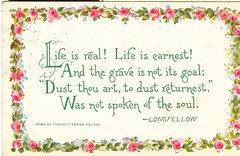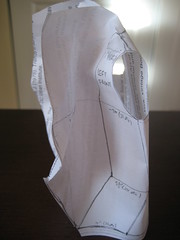I’ve been wanting to write a post about walkability for some time now, but the more I think about it, the more I realize it should be a series, because if I tried to say everything I wanted to say in one post, it would approach book length, and it’s long enough already. So consider this the initial post in an occasional series on walkable urbanism, interspersed with your regularly scheduled poetry, opera, and bibliogeekery.
Among the myriad of nifty mappy things the internet has enabled in recent years, Walk Score is among my favorites. You type your address into it, and it gives you a walkability score based on your proximity to various necessities, which you can then view on a map. Pretty sweet. But when I moved from Philadelphia to New London, I started to notice some of Walk Score’s flaws. It rates my previous address in Philadelphia at 89 out of 100: “very walkable” but not quite ideal. My address in New London, by comparison, gets a 92, “Walkers’ Paradise.” I actually think my current location is a good deal less walkable than my previous one: while I can easily walk downtown and avail myself of an organic
food co-op, a couple of good coffee shops, a bunch of small boutiques, various art galleries, and the local arts center (all good things), there aren’t really any large grocery stores within easy walking distance (Walk Score has an annoying habit of classifying small convenience stores as “groceries”; it also counts the local porno shop and a small “Christian
bookstore” in a nearby church as “bookstores”), and other necessities of life are farther off.
In Philly, I lived two blocks from a post office, a drugstore, a hardware store, a dry cleaner, a couple of laundromats, many restaurants, a great coffee shop, and a wine shop. Within a ten-block-or-so radius were my favorite used bookstore, a Whole Foods, a small local grocery, a tiny farmers’ market, and the central branch of the Free Library of Philadelphia. What’s more, I could walk all the way across the city, mostly on streets that weren’t too wide to cross safely or too traffic-clogged to be enjoyable; many of these streets were shaded by trees and lined with lovely old brick and brownstone buildings. If I didn’t feel like walking, there were three bus routes within a couple of blocks of my building, and I could get to regional rail and Amtrak easily. (I can walk to the train station here, and I use the bus system—but any bus system that runs once an hour, stops service at 7 p.m., and doesn’t run on Sundays is all but unusable for most people.) When I was out and about in Philly, I saw my neighbors; here, I’m often the only person on the street. There’s a whole subjectively perceived (but no less real) culture of walking (or not walking) that tools like Walk Score miss.
So I was pleased to see that there’s now a project afoot for an open source use of the Walk Score algorithm. I’ve signed up to be notified when it’s released; I hope it’ll allow for citizen walk-score mappers to update their local maps, to re-flag misclassified businesses, identify streets where there are no sidewalks or many lanes of traffic or lousy snow removal, and offer some commentary as well as concrete data.
And I was even more pleased to find Walkshed, a tool rather like Walk Score but with fine-tuned controls you can adjust to specify your greater or lesser need to be near various amenities—so if you really want tree cover and parks but would rather not live near a bar, or if public transit is a must but you don’t particularly care about hardware scores, you can adjust your map accordingly and it’ll show you a nice “heat map” of your city, with the most promising areas shaded in green. And it takes street connectivity and barriers to walking (like highways and rivers) into account. Alas, it’s limited to New York and Philadelphia right now, but I really hope the concept catches on.


